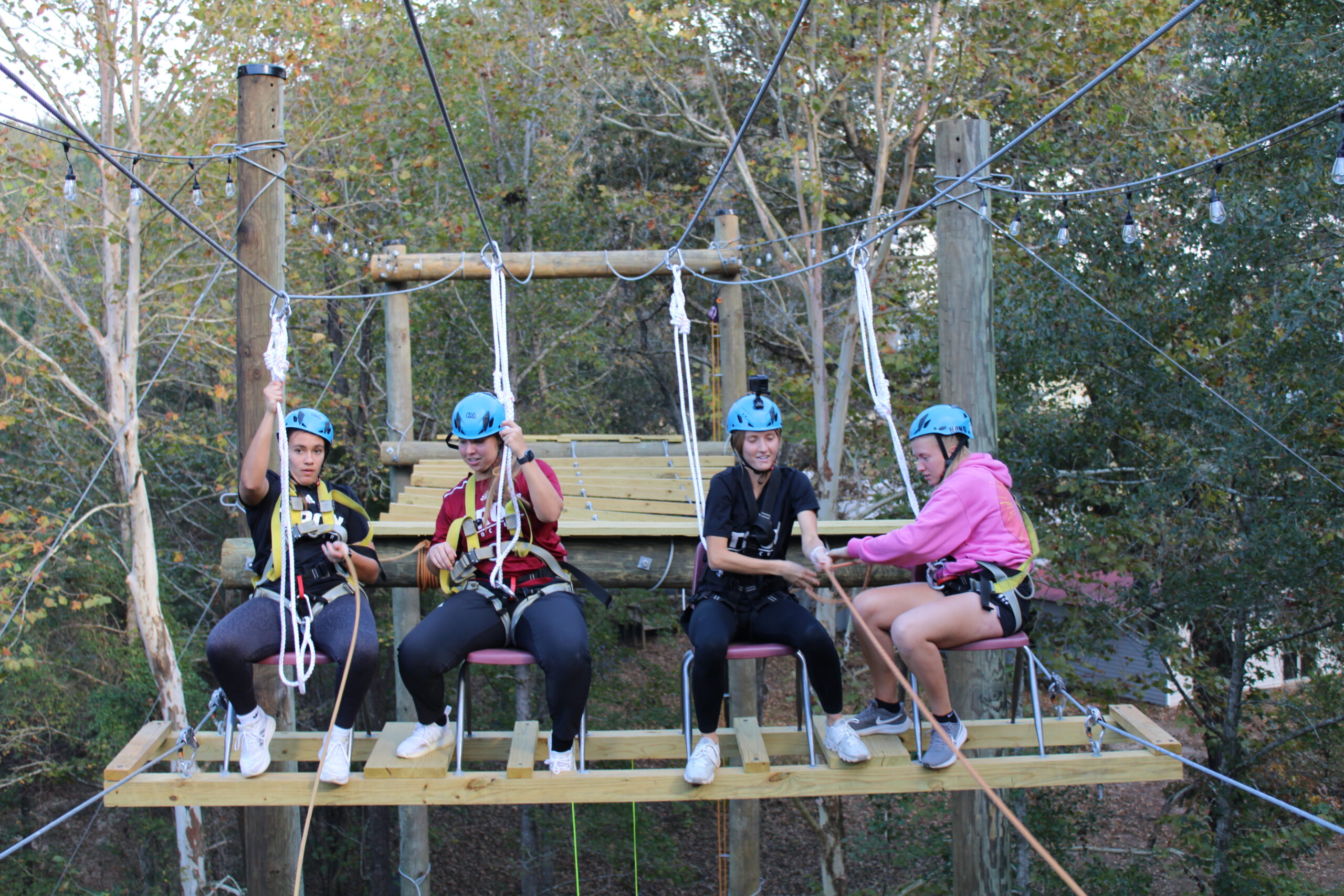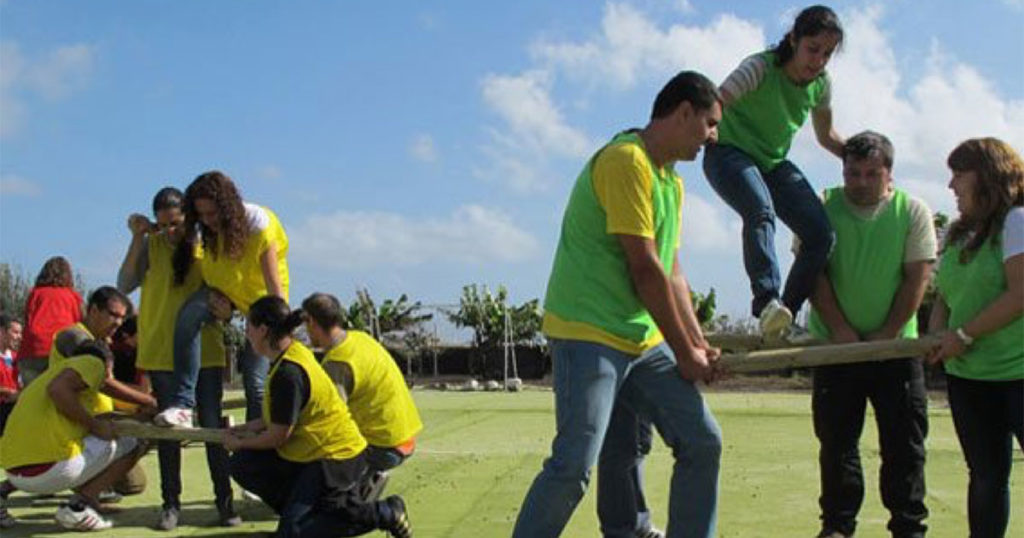Ultimate Team Challenge Course in Alabama: Unleash Your Team's Potential
Ultimate Team Challenge Course in Alabama: Unleash Your Team's Potential
Blog Article
Immerse Your Group in a Dynamic Obstacle Course Experience for Development and Unity
In the world of team development and communication, the usage of vibrant difficulty courses has actually emerged as an engaging technique to foster development and unity among group members. As groups face these tests together, they are usually challenged with the opportunity to uncover untapped capacity, grow bonds, and discover brand-new techniques for functioning collectively in the direction of typical objectives.
Benefits of Dynamic Obstacle Courses
Taking part in vibrant challenge programs supplies teams a hands-on chance to create essential communication and analytic skills in a physically appealing setting. These training courses supply a special setting where team members are confronted with numerous obstacles that require cooperation, efficient interaction, and fast decision-making to overcome. By participating in activities such as high ropes training courses, team building video games, and problem-solving obstacles, individuals are pushed out of their comfort zones, cultivating personal and group growth.
One considerable benefit of vibrant challenge courses is the enhancement of communication skills within teams. Through facing difficulties together, team members learn to communicate better, listen actively, and provide clear instructions to each other. These experiences convert straight right into the work environment, enhancing general teamwork and productivity. Furthermore, these training courses advertise analytical skills by requiring groups to assume critically, strategize, and adjust to transforming circumstances on the area. This ability to solve troubles successfully under pressure is an important asset in any kind of expert setting. Overall, vibrant difficulty courses supply an all natural method to team growth, integrating exercise with skill-building to advertise unity and growth.
Team Structure Through Challenge Navigation
Obstacle navigation on a dynamic difficulty program urges group participants to count on each various other's toughness, problem-solving abilities, and resilience. By confronting physical and mental obstacles as a cohesive unit, team members learn to leverage individual skills for the collective advantage of the group.

Enhancing Communication Abilities and Depend On
Building upon the structure of strengthened interpersonal partnerships developed with overcoming challenges as a group, the emphasis now moves towards improving interaction skills and cultivating count on within the team dynamic. Effective interaction is vital for ensuring that employee comprehend each various other's viewpoints, strategies, and objectives. By participating in activities that need concise and clear communication, such as browsing an obstacle course blindfolded or resolving a trouble with minimal verbal hints, group participants can exercise active listening and efficient expression of concepts.
Trust fund is another essential aspect in group characteristics. Trusting your colleagues means believing in their capabilities, intents, and integrity. Through collaborative challenges that require a high level of depend on, such as a trust fund loss or a ropes training course where staff member count on each other for safety, individuals learn to allow go of worry and question, promoting a sense of unity and cohesion within the team. By honing communication skills and building trust, groups can attain better harmony and performance.
Promoting Camaraderie and Unity
Unity amongst group participants is the foundation of a strong and natural team dynamic, vital for accomplishing common objectives and fostering a feeling of friendship. When staff member feel hop over to here joined, they are more probable to connect successfully, count on each other, and work collaboratively towards a typical objective. Cultivating friendship within a group can be accomplished via different tasks during a vibrant difficulty training course experience. These activities urge team participants to depend on each various other, develop common respect, and value the distinct toughness that each individual gives the team. By taking part in obstacles that require collaboration and control, staff member create a deeper link and understanding of each other, resulting in a solid feeling of unity. This unity not only improves synergy during the difficulty training course but likewise rollovers into the work environment, developing a helpful and favorable environment where individuals really feel valued and encouraged to work towards shared success.

Strategies for Long-Term Team Development
To reinforce the group and maintain's development over time, calculated preparation and consistent effort are critical adhering to the farming of friendship and unity within the team. Team Challenge Course in Alabama. One efficient approach for long-term team growth is to establish clear objectives and purposes. By specifying particular targets, employee can investigate this site straighten their initiatives towards a common objective, fostering motivation and accountability. Regular interaction is also critical in keeping group communication. Urging open dialogue, providing positive comments, and actively paying attention to employee can improve collaboration and depend on within the group.
Furthermore, spending in continuous understanding and development possibilities can help employee obtain brand-new skills, stay involved, and adapt to progressing obstacles. Whether through training programs, workshops, or mentorship efforts, providing opportunities for professional and individual development next page can add to the group's general success. Furthermore, acknowledging and commemorating success, both little and large, can boost morale and strengthen a favorable group culture. By executing these methods continually, teams can navigate challenges, accept adjustment, and grow over time.

Conclusion
In verdict, vibrant difficulty programs provide numerous advantages for group growth and unity. These experiences provide a system for lasting team development and development, leading to a much more cohesive and effective team dynamic.
In the world of team development and communication, the use of vibrant obstacle programs has arised as an engaging approach to foster development and unity among group participants. By involving in activities such as high ropes courses, group building video games, and analytical challenges, individuals are pushed out of their convenience zones, fostering individual and team development.
In essence, group building with obstacle navigating is an efficient means to cultivate a supportive and interconnected team dynamic.

Report this page